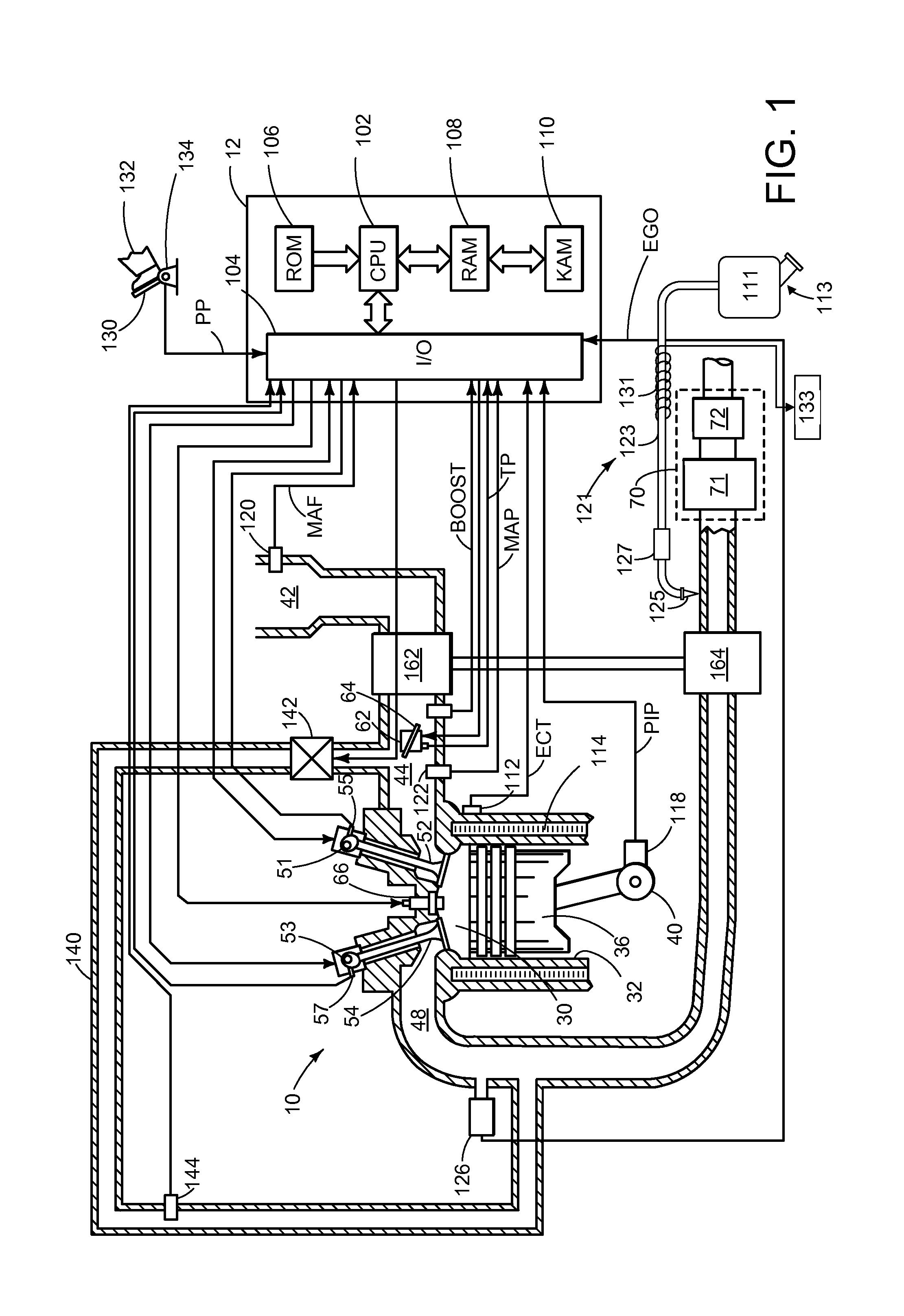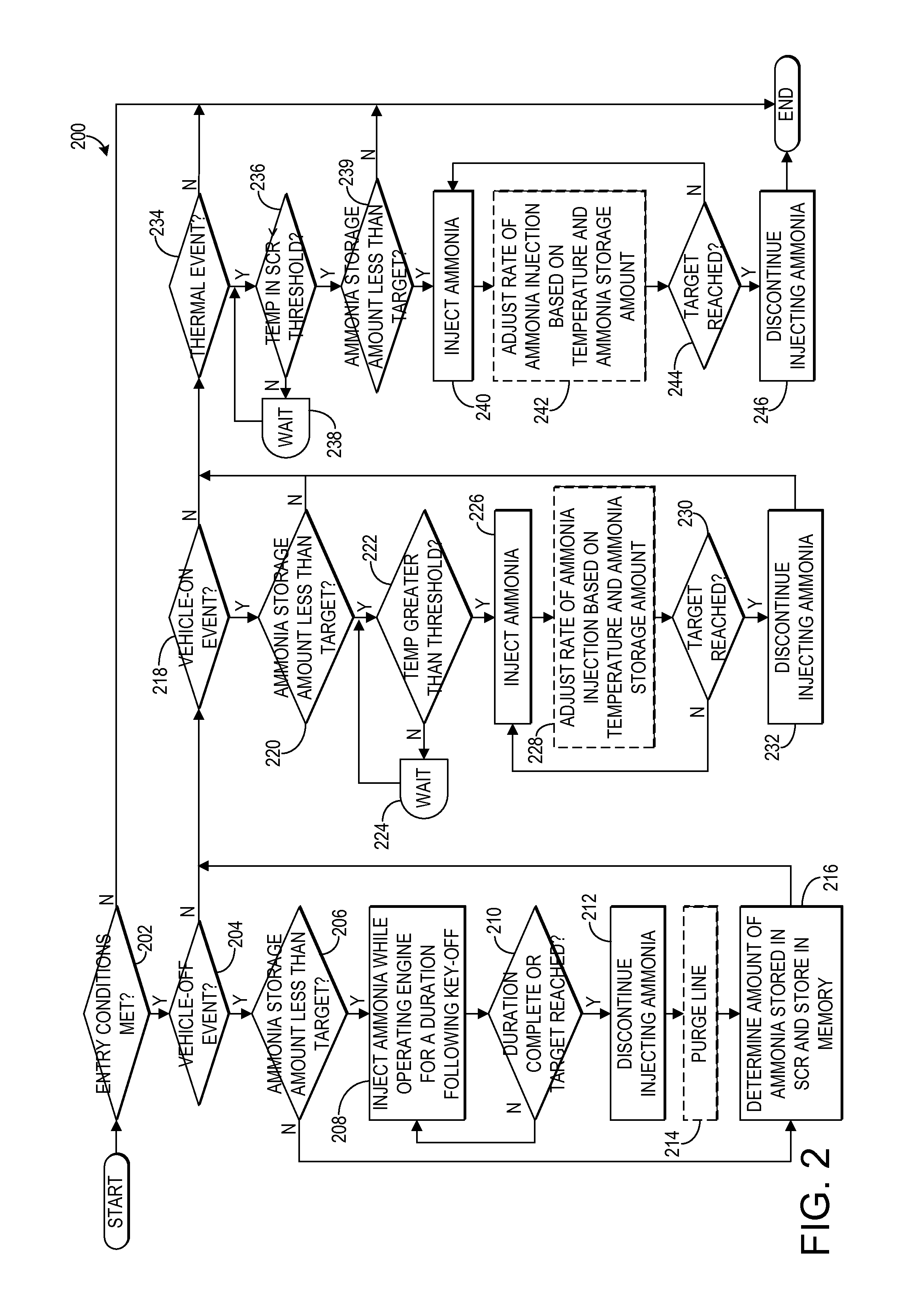Ammonia storage management for scr catalyst
a technology of ammonia storage and catalyst, which is applied in the direction of machines/engines, mechanical equipment, engine starters, etc., can solve the problems of insufficient ammonia storage, reduced nox conversion efficiency during certain operating conditions, and ammonia slippage from the catalyst, so as to reduce the emission of nitrogen oxides
- Summary
- Abstract
- Description
- Claims
- Application Information
AI Technical Summary
Benefits of technology
Problems solved by technology
Method used
Image
Examples
Embodiment Construction
[0013]The following description relates to systems and methods for managing ammonia storage in a selective catalytic reduction (SCR) catalyst included in an emission control system of an engine, such as the engine shown in FIG. 1. As shown in FIGS. 2 and 3, an amount of ammonia stored in an SCR may be managed and replenished during various conditions in order to maintain a desired NOx conversion capability in the catalyst. For example, an additional amount of ammonia, e.g., in the form of urea or diesel exhaust fluid (DEF), may be injected following a vehicle-off event so that a sufficient amount of ammonia may remain in the SCR catalyst during a subsequent vehicle-on event after the engine cools down. Further, following a cold start event or following a thermal event, such as a diesel particulate filter (DPF) regeneration event, injection of ammonia may be adjusted to quickly replenish the SCR catalyst so that a desired NOx conversion capability of the catalyst is maintained.
[0014]...
PUM
 Login to View More
Login to View More Abstract
Description
Claims
Application Information
 Login to View More
Login to View More - R&D
- Intellectual Property
- Life Sciences
- Materials
- Tech Scout
- Unparalleled Data Quality
- Higher Quality Content
- 60% Fewer Hallucinations
Browse by: Latest US Patents, China's latest patents, Technical Efficacy Thesaurus, Application Domain, Technology Topic, Popular Technical Reports.
© 2025 PatSnap. All rights reserved.Legal|Privacy policy|Modern Slavery Act Transparency Statement|Sitemap|About US| Contact US: help@patsnap.com



